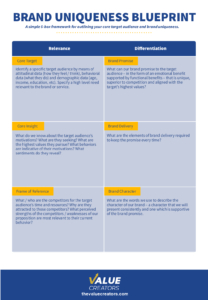161. Connie Whitman: Turning Experience Into An Intellectual Property Business
Your individual experience is a business asset. Life is teaching us more than we sometimes realize. An insightful analysis of what we’ve experienced, combined with purposeful translation, can generate unique intellectual property on which to base a unique approach to business. Connie Whitman joins Economics For Business to share her experience and her development of a thriving, resilient, and adaptive coaching and training service.
Key Takeaways and Actionable Insights
Experience is an asset that reveals our business superpowers.
Life teaches us whether we fully realize it or not. While climbing the job ladder at a firm may seem like the pursuit of credentials and titles, it’s better understood as an accumulation of knowledge and learning that can be applied in the future in entrepreneurship.
Connie Whitman enjoyed a 20-year career in financial services up to the SVP level. It was her customers who pointed out to her what “superpowers” she was developing — a distinctive capacity to assist all parties in a complex collaborative contract to fully understand the benefits accruing to each one of them individually and all of them collectively.
We all can have these superpowers, but we don’t always realize them until a third party points them out, through asking for input or advice or seeking us out or praising us. It’s important to learn the right kind of self-assessment — and to learn to listen to others’ assessment of us — so as to be able to understand our own superpowers.
We can translate our experience into intellectual property that forms the basis for an entrepreneurial business.
Connie Whitman transformed her experience into both a brand philosophy and a scalable methodology.
Connie knew from her experience in business that the function entitled “sales” is often viewed negatively: sales activities and salespeople might be accused of rapaciousness and avarice, however unjustified such accusations may be. She intended to develop a service in coaching and training in the sales field, and so it was important to distance herself from these misperceptions. Her counter was selling from a place of love: relationship selling based on love, respect, and integrity. Selling is the construction of an “everybody wins” proposition. It’s an honorable implementation of the entrepreneur’s ethic of service. Anyone using Connie’s techniques would evoke for themselves a feeling of pride and self-respect that the critics of the sales function try to deny.
She crafted a methodology for selling from a place of love in the form of a seven-step selling process. It is replete with Austrian principles of subjectiveness, empathy, and customer sovereignty.
Preparedness: Planning in advance to assemble all the knowledge and understanding available to make you informed and ready; anticipating what the customer will want to know and is likely to ask.
Connecting: Using empathy to connect on the basis of what’s important to the customer in order to establish credibility.
Exploring: Asking questions to learn as much as possible about the customer’s needs and preferences in the context of their current circumstances.
Active Listening: Connie’s phrase is “be present” — listen intently and indicate that you have heard accurately by asking follow up questions to further explore customer needs.
Presenting Solutions: Framing all value propositions as a solution — reliving customer unease.
Confirming: The process of closing the sale, actively asking the customer for their business.
Following up: Consistent, persistent, and respectful (CPR) follow up to confirm satisfaction and potentially extend the relationship.
Connie’s method has evolved and improved over the years — nothing is ever fixed, and all businesses adapt and learn. Yet this intellectual property developed from experience has proven to be solid capital generating both revenue flows and client satisfaction, not to mention word-of-mouth recommendations and references.
Business-building is a function of your network — another piece of intellectual property born of experience.
You meet many people in your professional career and you make many connections. Your network is another IP asset. It’s one you should groom and keep fresh and active, turning it into another business asset.
An IP business can be lasting, but you may have to refresh the infrastructure.
Connie’s in-person, face-to-face business model was challenged during the COVID pandemic. When business travel stopped, and a lot of sales training budgets were cut. The IP remained valid. The market signal was for her to digitize the business. She took classes and hired consultants to learn how to achieve domain authority. She educated herself on the technology required for digitization of her individual business model, and the processes for digital engagement that were consistent with her 7-step process and principles. The result has been further growth, and the continued fulfillment of pursuing her business goals, and realizing new ones.
Your entrepreneurial IP business can become your most fulfilling experience.
Connie describes her entrepreneurial experience as immensely fulfilling — the most rewarding thing she has done in her life. It’s the realization of the value accumulated over a career, and the new value shared with clients in providing service to them. It has been tremendously hard work, of course, and has required some challenging resource allocation decisions — of both time and money — but the reward greatly exceeds the sacrifice.
Additional Resources
“Connie Whitman’s Seven-Step Sales Loop” (PDF): Mises.org/E4B_161_PDF
ESP—Easy Sales Process by Connie Whitman: Mises.org/E4B_161_Book
Connie’s website: WhitmanAssoc.com
Changing The Sales Game podcast: Mises.org/E4B_161_Pod
